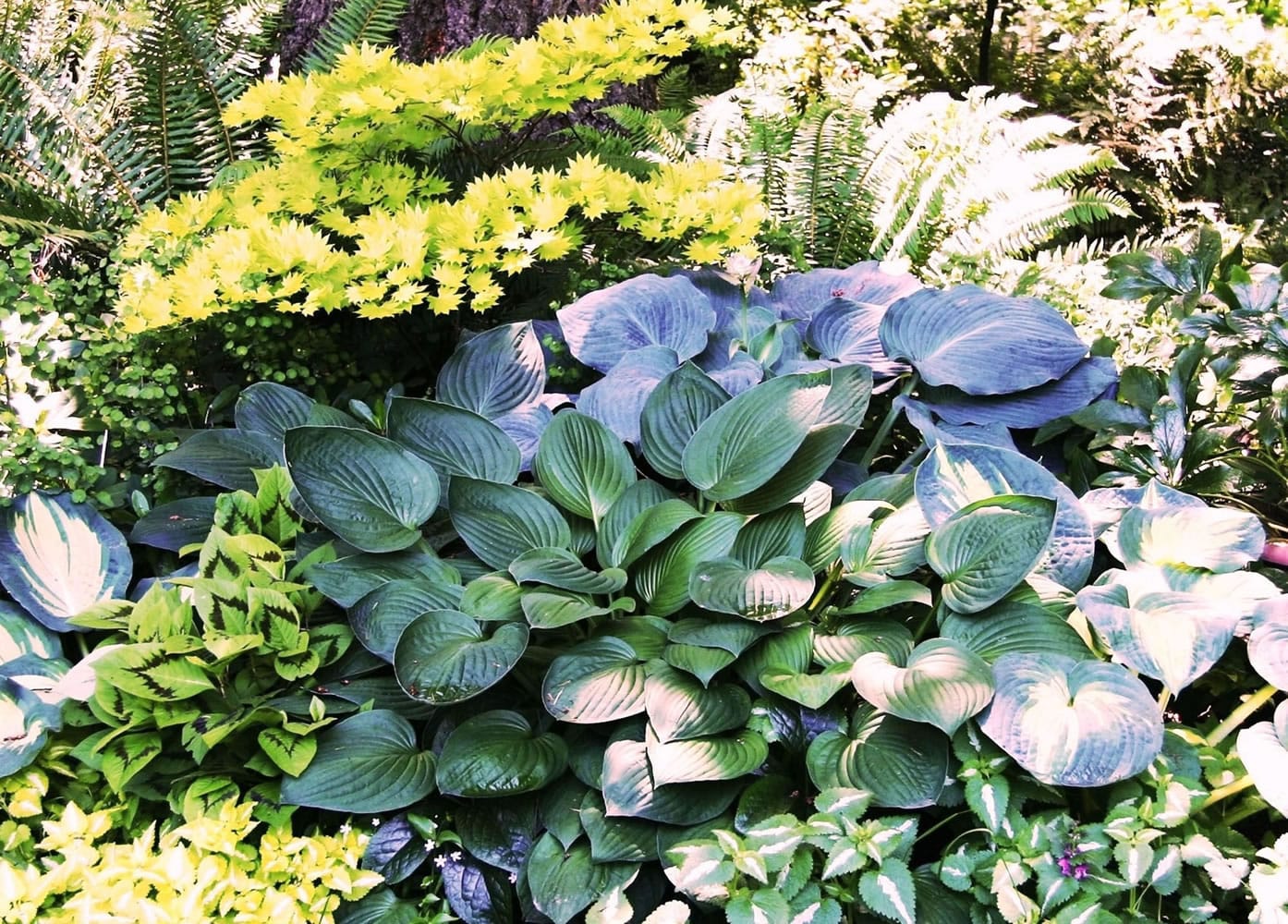Hosta “Great Expectations” has huge leaves in a mix of blue, green and cream. Each color looks as if it was painted in thick strokes by a good-sized Chinese calligraphy brush. Even with three distinct colors on each leaf, this plant compliments a vast array of garden colors. Blue and cream often act as neutral accents, bringing out the depth of other colors, enhancing the light and shade affects of the garden.
Don’t get stuck in the notion that you have to plant only the colors you have planted before. Being safe in the garden limits your opportunities. Be a pioneer and venture out on your own. Taking chances has opened the door to some of the best surprise color combinations in my own garden.
I never knew, until my “Moonbeam” coreopsis bloomed at the foot of the daylily Hemerocallis “Minnie Pearl,” how cheerful I found the combination of pink and yellow together.
I try to be open about everyone’s choice of color in the garden, just as I try to be open about anyone’s personal plant preferences. One trait that I find annoying is the outspoken person who lets everyone know, while looking at someone else’s garden, that they “hate yellow in the garden” or “will not stand for an orange flower” springing up in one of their borders. Yellow happens; it makes millions of gardeners happy. If you don’t want it in your garden, don’t plant it.
There is a certain play of color that comes with each new season. Summer is always good for a mix of deep, full-bodied hues of red, yellow and purple that hold color well under the noon sun. The family of rudbeckia, commonly known as black-eyed Susan, is a favorite for deep orange-yellow to burgundy blossoms. Echinacea, or purple coneflower, thrives in full sun and mixes well with almost any other garden color.
Summer also is the season of colorful bedding plants. Experiment with your favorite colors in brash, unexpected combinations. A large red planter filled to bursting with the vibrant orange, green and yellow striped leaves of the canna lily “Tropicana” will stand up to the sunniest location in your garden. Take it up a notch by placing nearby another brightly colored pot planted with Nicotiana “Perfume Deep Purple” and a host of Zinnia “Orange Profusion.”
Few things affect the overall look of a landscape as much as color. Since a person’s choice of color is subjective, rules are little more than guidelines, made to be broken. We learn about plants and color by gardening over time.
Midsummer is one of the best times to look around the garden and decide if your color choices are working for you.
Hanging baskets
One of the best places to work with color is in mixed planters and hanging baskets. I love the overabundant, bloom-filled concoctions that spill over the sides of a planter. They add color to the garden and interest to decks and porches, even as garden flowers begin to fade for the season. Annual plantings in pots, planters and baskets give the smallest garden a sense of generosity as they overflow their containers.
Not every garden has full sun for an extended period each day, and not every seasonal planter has to be planted with brightly colored, sun-loving plants.
One of the favorite color spots in my garden is positioned along a woodland trail at the edge of a shade border. Here, I added a large, deep blue planter featuring the creeping “Blue Star” juniper, two vibrant, upright Japanese painted ferns (Athyrium nipponicum “Pictum”), a variegated sedge and the trailing Lamium “Beacon Silver.”
A predominantly green garden, as you would find around a cabin in the woods, is pleasing to many gardeners. Anyone who plays with color knows that green encompasses a vast array of differing hues. Look at the deep green of winter blooming hellebores, the muted neutral of lady’s mantle (Alchemilla mollis) and the lime or blue green of many hosta varieties. An all-green garden, planned and planted correctly, can be an intricate patchwork of mottled light and shade.
Everyone knows that a garden is ever-changing and never finished. Part of gardening is being willing to take chances when making color choices, choices that please the person we are today. Stray from old standbys. Being gardeners, we are here for the long haul. The worst thing we can do is make a mistake, and in gardening there will always be another spring, summer, fall and winter to experiment with a new batch of color.
Robb Rosser is a WSU-certified master gardener. Reach him at Write2Robb@aol.com.



